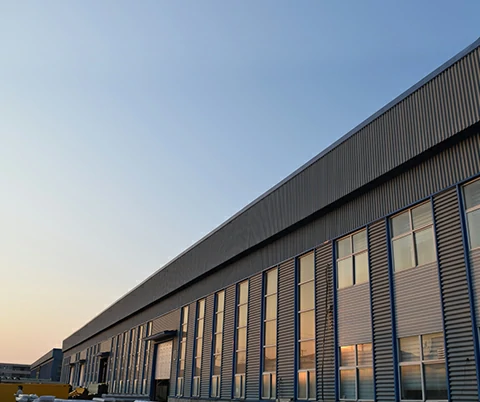loading...
- No. 9, Xingyuan South Street, Dongwaihuan Road, Zaoqiang County, Hengshui, Hebei, China
- admin@zjcomposites.com
- +86 15097380338
- Welcome to visit our website!
grating de frp
Understanding FRP Gratings A Comprehensive Overview
Fiber Reinforced Plastic (FRP) gratings have gained considerable popularity in various industries due to their unique properties and advantages over traditional materials like steel and wood. This article delves into the characteristics, applications, and benefits of FRP gratings, emphasizing why they have become a preferred choice for many engineering and construction projects.
What is FRP Grating?
FRP grating is a type of composite material made from a polymer matrix reinforced with fibers, usually glass or carbon. This combination results in a lightweight yet robust product that exhibits exceptional strength and durability. The grating is manufactured by combining resin and reinforcing fibers, which are then molded into various shapes and sizes. The final product comes with a non-slip surface, making it ideal for high-traffic areas where safety is a concern.
Key Properties of FRP Gratings
1. Lightweight One of the standout features of FRP gratings is their low weight. Compared to steel gratings, FRP options can be up to 75% lighter, which simplifies installation and reduces the overall structural load.
2. Corrosion Resistance FRP is highly resistant to chemical corrosion, making it suitable for use in harsh environments, including marine applications and industrial settings where exposure to acids, alkalis, and solvents is common.
3. Non-Conductive The non-conductive nature of FRP makes it an excellent choice for electrical applications. It minimizes the risk of electrical hazards, making it safer for use in power plants and other electrical installations.
4. Maintenance-Free Unlike metal gratings, which may require regular maintenance to prevent rust and corrosion, FRP gratings are virtually maintenance-free. Their durable nature ensures longevity, reducing the need for frequent replacements.
5. Customizability FRP gratings can be manufactured in various colors, sizes, and thicknesses, allowing for customization to meet specific project requirements. This versatility makes them suitable for diverse applications, from walkways to heavy-duty platforms.
Applications of FRP Gratings
grating de frp

1. Industrial Flooring FRP gratings are commonly used in industries such as chemical processing, wastewater treatment, and food production, where spills and chemical exposures are prevalent. Their slip-resistant surface provides safety and durability.
2. Marine and Offshore Given their resistance to seawater and marine environments, FRP gratings are widely utilized in shipbuilding, docks, and offshore rigs. They help to reduce the weight of structures while ensuring safety.
3. Architectural Features Many architects and designers incorporate FRP gratings into their projects for aesthetic purposes. Their ability to be molded into custom shapes, along with vibrant colors, makes them attractive for walkways, bridges, and outdoor spaces.
4. Transportation FRP gratings are also used in public transportation systems, such as railways and airports, where lightweight materials that require less maintenance are essential. They provide safe, durable support systems in these high-traffic environments.
Benefits of Using FRP Gratings
The adoption of FRP gratings brings several benefits to various sectors
- Cost-Effectiveness While the initial cost of FRP gratings may be higher than traditional materials, their longevity, reduced maintenance costs, and lightweight nature lead to overall savings in long-term project budgets.
- Sustainability With growing concerns over environmental impact, FRP materials are becoming a sustainable choice. Their durability contributes to reduced waste and fewer resource expenditures over time.
- Safety The non-slip surface and chemical resistance of FRP gratings enhance safety in environments frequently exposed to spills or wet conditions. This is particularly critical in industrial and outdoor applications.
Conclusion
In conclusion, FRP gratings are transforming the way industries approach construction, safety, and material efficiency. Their lightweight, corrosion-resistant properties make them ideal for diverse applications, promising reliability and durability while also providing a safer working environment. As the demand for innovative materials continues to rise, FRP gratings stand out as a robust solution that meets the needs of modern engineering and architectural projects. Their versatility, combined with their many benefits, ensures that FRP gratings are set to become a staple in various sectors for years to come.
-
Premium FRP Handrail for All ApplicationsNewsAug.29,2025
-
Low Maintenance FRP Mini Mesh Grating ProductsNewsAug.29,2025
-
Innovative FRP Square Tubes for Modern Industrial SolutionsNewsAug.29,2025
-
FRP Water Storage Tanks Wholesale Solutions for Bulk BuyersNewsAug.29,2025
-
FRP Molded Grating Solutions for Diverse Industrial ApplicationsNewsAug.29,2025
-
Construction Advancements Through FRP Pultruded ProfilesNewsAug.29,2025
-
Why Choose FRP Railings, Guardrails, and Handrail Systems?NewsAug.29,2025
